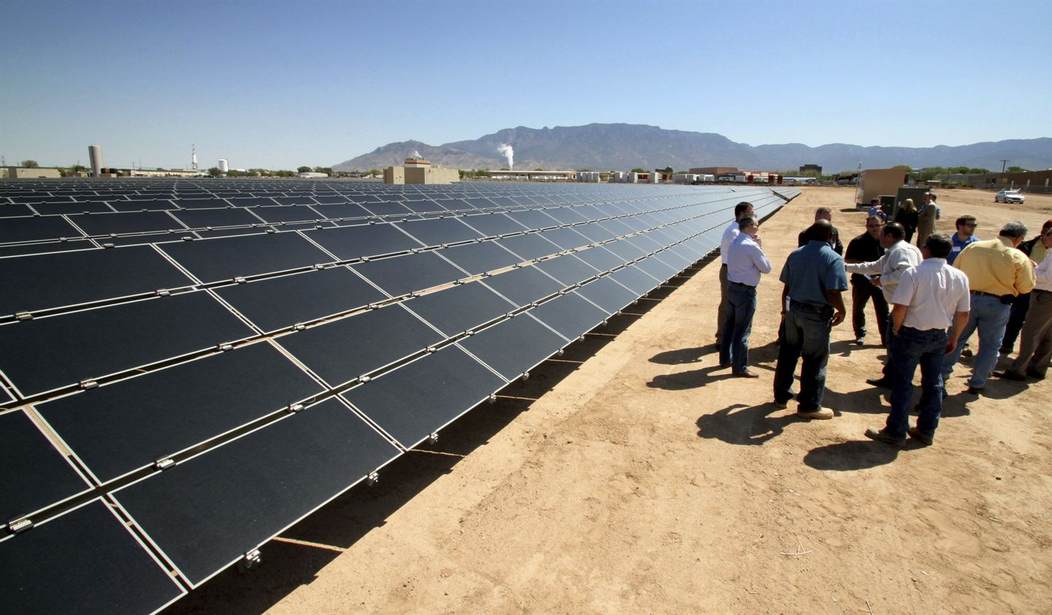The Biden administration has approved a massive solar power project in California that will produce enough power to electrify 90,000 homes. That’s the good news. The bad news is that producing the solar panels in China using coal-fired electrical power plants to generate electricity will produce almost as much CO2 as the fossil fuel plants the solar power is supposed to replace.
Manufacturing solar panels is a dirty business. Starting with the raw mineral quartz, the refining process produces a highly toxic substance, silicon tetrachloride, that some manufacturers simply end up dumping. Huge amounts of power and heat must be used to manufacture the photovoltaic cells.
Since most solar cells in the west are manufactured in China, that heat and power are generated by coal-fired electricity. Maybe someone should ask why we’re buying solar cells to save the planet from carbon pollution when the process of making them not only poisons the earth but dumps as much carbon into the atmosphere as energy produced solely by fossil fuels.
Producing a solar panel in China creates around twice as much carbon dioxide as making it in Europe, said Fengqi You, professor of energy systems engineering at Cornell University. In some countries or regions that don’t rely heavily on fossil fuels for electricity generation, such as Norway and France, installing a high-carbon, Chinese-made solar panel might not reduce emissions at all, Mr. You said.
“Yes, we are clean” in the West, said Mr. You. “But then the process of getting these panels from another country—China now, maybe somewhere else later—produces a lot of emissions.”
It’s true that after a few years of operation, a solar panel will eventually lead to a net reduction in carbon emissions compared to power generated by fossil fuels. But is the loss in efficient generation of power worth the difference?
The dilemma is becoming more apparent as world leaders prepare to meet in Glasgow, Scotland, in November to make a new push to reduce greenhouse gas emissions. Part of that effort involves coaxing China, the world’s largest emitter, to shift away from coal-burning electricity to slash emissions even as the West gorges on Chinese gear from solar panels to lightweight aluminum for electric vehicles. At a July meeting of environment ministers from the Group of 20 leading economies, China and India blocked an agreement to phase out coal-fired electricity.
Finding alternatives won’t be easy. China’s surging and cheaper polysilicon production has harmed U.S. producers, forcing the shutdown of several factories that use power sources with lower carbon emissions than Chinese producers. Wacker Chemie AG , the West’s largest producer of solar-grade polysilicon, pays up to four times as much for power at its factories in Germany compared with Chinese producers in Xinjiang, said company spokesman Christof Bachmair.
China has engaged in unfair trading practices to gain a massive advantage in the solar market. They have kept prices artificially low for the vital material polysilicon — essential to producing all solar power — which has virtually destroyed the once-vibrant U.S. solar industry.
Related: Toyota Puts the Brakes on EV, But Not Just for the Reasons the Verge Says
Solar power is still far more expensive than power generated by natural gas and oil. That hasn’t slowed the momentum to develop “sustainable” energy sources. But in developing those sources, it would be good to ask whether to savings in carbon pollution are significant enough to justify the changes.











Join the conversation as a VIP Member